#nazerith
Text
Palestinian Recipes from The Immigrant Cookbook by Leyla Moushabeck
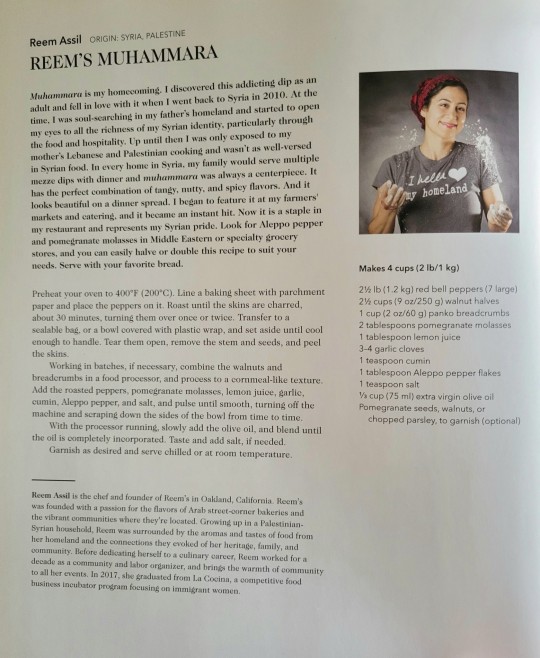

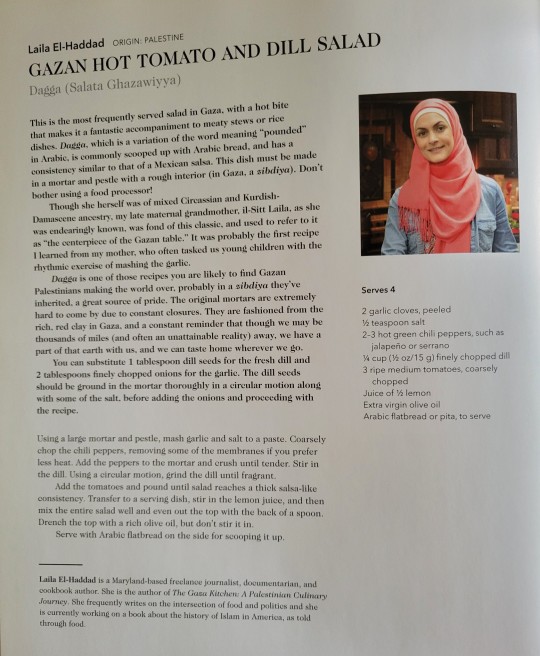
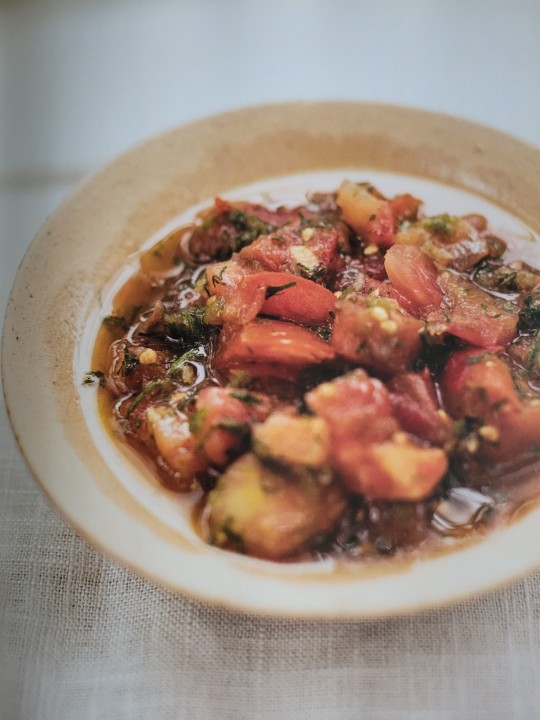
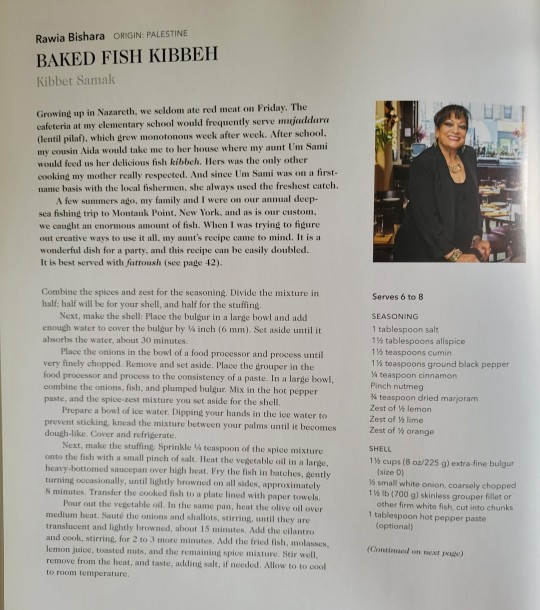
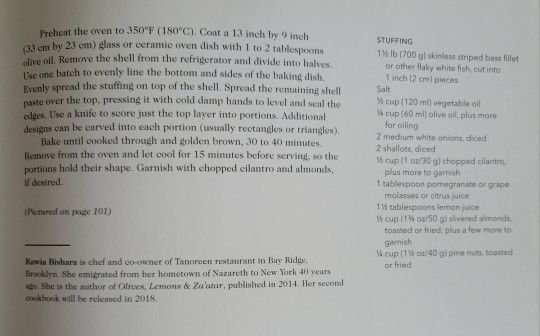
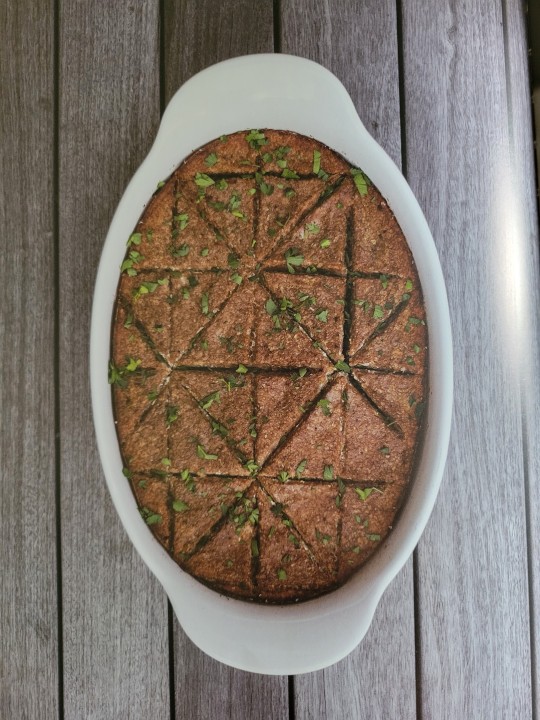
Full page transcripts under the cut:
Recipe #1: Reem's Muhammara
Photo Credit: Jung Fitzpatrick Photography and Ricarius Photography
"Muhammara is my homecoming. I discovered this addicting dip as an adult and fell in love with it when I went back to Syria in 2010. At the time, I was soul-searching in my father's homeland and started to open my eyes to all the richness of my Syrian identity, particularly through the food and hospitality. Up until then I was only exposed to my mother's Lebanese and Palestinian cooking and wasn't well-versed in Syrian food. In every home in Syria, my family would serve multiple mezze dips with dinner and muhammara was always a centerpiece. It has the perfect combination of tangy, nutty, and spicy flavors. And it looks beautiful on a dinner spread. I began to feature it at my farmers' markets and catering, and it became an instant hit. Now it is a staple in my restaurant and represents my Syrian pride. Look for Aleppo pepper and pomegranate molasses in Middle Eastern or specialty grocery stores, and you can easily halve or double this recipe to suit your needs. Serve with your favorite bread."
Makes 4 cups (2 lb / 1 kg)
Ingredients:
2 1/2 lb (1.2 kg) red bell peppers (7 large)
2 1/2 cups (9 oz / 250 g) walnut halves
1 cup (2 oz / 60 g) panko breadcrumbs
2 tablespoons pomegranate molasses
1 tablespoon lemon juice
3-4 garlic cloves
1 teaspoon cumin
1 tablespoon Aleppo pepper flakes
1 teaspoon salt
1/3 cup (75 ml) extra virgin olive oil
Pomegranate seeds, walnuts, or chopped parsley, to garnish optional)
Directions:
Preheat your oven to 400F (200C). Line a baking sheet with parchment paper and place the peppers on it. Roast until the skins are charred, about 30 minutes, turning them over once or twice. Transfer to a sealable bag, or a bowl covered with plastic wrap, and set aside until cool enough to handle. Tear them open, remove the stem and seeds, and peel the skins.
Working in batches, if necessary, combine the walnuts and breadcrumbs in a food processor, and process to a cornmeal-like texture. Add the roasted peppers, pomegranate molasses, lemon juice, garlic, cumin, Aleppo pepper, and salt, and pulse until smooth, turning off the machine and scraping down the sides of the bowl from time to time.
With the processor running, slowly add the olive oil, and blend until the oil is completely incorporated. Taste and add salt, if needed.
Garnish as desired and serve chilled or at room temperature.
"Reem Assil is the chef and founder of Reem's in Oakland, California. Reem's was founded with a passion for the flavors of Arab street-corner bakeries and the vibrant communities where they're located. Growing up in a Palestinian-Syrian household, Reem was surrounded by the aromas and tastes of food from her homeland and the connections they evoked of her heritage, family, and community. Before dedicating herself to a culinary career, Reem worked for a decade as a community and labor organizer, and brings the warmth of community to all her events. In 2017, she graduated from La Cocina, a competitive food business incubator program focusing on immigrant women."
Recipe #2: Gazan Hot Tomato And Dill Salad
Dagga (Salata Ghazawiyya)
Photo Credit: Ricarius Photography
"This is the most frequently served salad in Gaza, with a hot ite that makes it a fantastic accompaniment to meaty stews or rice dishes. Dagga, which is a variation of the work meaning "pounded" in Arabic, is commonly scooped up with Arabic bread, and has a consistency similar to that of a Mexican salsa. This dish must be made in a mortar and pestle with a rough interior (in Gaza, a zibdiya). Don't bother using a food processor!
Though she herself was of mixed Circassian and Kurdish-Damascene ancestry, my late maternal grandmother, il-Sitt Laila, as she was endearingly known, was fond of this classic, and used to refer to it as "the centerpiece of the Gazan table." It was probably the first recipe I learned from my mother, who often tasked us young children with the rhythmic exercise of mashing garlic.
Dagga is one of those recipes you are likely to find Gazan Palestinians making the world over, probably in a zibdiya they've inherited, a great source of pride. The original mortars are extremely hard to come by due to constant closures. They are fashioned from the rich, red clay in Gaza, and a constant reminder that though we may be thousands of miles (and often an unattainable reality) away, we have a part of that earth with us, and we can taste home wherever we go.
You can substitute 1 tablespoon dill seeds for the fresh dill and 2 tablespoons finely chopped onions for the garlic. The dill seeds should be ground in the mortar thoroughly in a circular motion along with some of the salt, before adding the onions and proceeding with the recipe."
Serves 4
Ingredients:
2 garlic cloves, peeled
1/2 teaspoon salt
2-3 hot green chili peppers, such as jalapeno or serrano
1/4 cup (1/2 oz / 15 g) finely chopped dill
3 ripe medium tomatoes, coarsely chiopped
Juice of 1/2 lemon
Extra virgin olive oil
Arabic flatbread or pita, to serve
Directions:
Using a large mortar and pestle, mash garlic and salt to a paste. Coarsely chop up the chili peppers, removing some of the membranes if you prefer less heat. Add the peppers to the mortar and crush until tender. Stir in the dill. Using circular motion, grind the dill until fragrant.
Add the tomatoes and pound until salad reaches a thick salsa-like consistency. Transfer to a serving dish, stir in the lemon juice, and then mix the entire salad well and even out the top with the back of a spoon. Drench the top with a rich olive oil, but don't stir it in.
Serve with Arabic flatbread on the side for scooping it up.
"Laila El-Haddad is a Maryland-based freelance journalist, documentarian, and cookbook author. She is the author of The Gaza Kitchen: A Palestinian Culinary Journey. She frequently writes on the intersection of food and politics and she is currently working on a book about the history of Islam in America, as told through food."
Recipe #3: Baked Fish Kibbeh
Kibbet Samak
Photo Credit: Ricarius Photography
"Growing up in Nazareth, we seldom ate red meat on Friday. The cafeteria at my elementary school would frequently serve mujaddara (lentil pilaf), which grew monotonous week after week. After school, my cousin Aida would take me to her house where my aunt Um Sami would feed us her delicious fish kibbeh. Hers was the only other cooking my mother really respected. And since Um Sami was on a first-name basis with the local fisherman, she always used the freshest catch.
A few summers ago, my family and I were on our annual deep-sea fishing trip to Montauk Point, New York, and as is our custom, we caught and enormous amount of fish. When I was trying to figure out creative ways to use it all, my aunt's recipe came to mind. It is a wonderful dish for a party, and this recipe can be easily doubled. It it best served with fattoush."
Serves 6 to 8
Ingredients:
SEASONING
1 tablespoon saly
1 1/2 tablespoon allspice
1 1/2 teaspoons cumin
1 1/2 teaspoons ground black pepper
1/4 teaspoon cinnamon
Pinch nutmeg
3/4 teaspoon dried marjoram
Zest of 1/2 lemon
Zest of 1/2 lime
Zest of 1/2 orange
SHELL
1 1/2 cups (8 oz / 225 g) extra-fine bulgur (size 0)
1/2 small white onion, coarsely chopped
1 1/2 lb (700 g) skinless grouper fillet or other firm white fish, cut into chunks
1 tablespoon hot pepper paste (optional)
STUFFING
1 1/2 (700 g) skinless striped bass fillet or other flaky white fish cut into 1 inch (2 cm) pieces
Salt
1/2 cup (120 ml) vegetable oil
1/4 cup (60 ml) olive oil, plus more for oiling
2 medium white onions, diced
2 shallots, diced
1/2 cup (1 oz / 30 g) chopped cilantro, plus more to garnish
1 tablespoon pomegranate or grape molasses or citrus juice
1 1/2 tablespoons lemon juice
1/2 cup (1 3/4 oz / 50 g) slivered almonds, toasted or fried, plus a few more to garnish
1/4 cup (1 1/2 oz / 40 g) pine nuts, toasted or fried
Directions:
Combine the spices and zest for the seasoning. Divide the mixture in half; half will be for your shell, and half for the stuffing.
Next, make the shell: Place the bulgur in a large bowl and add enough water to cover the bulgur by 1/4 inch (6 mm). Set aside until it absorbs the water, about 30 minutes.
Place the onions in the bowl of a food processor and process until very finely chopped. Remove and set aside. Place the grouper in the food processor and process to the consistency of a paste. In a large bowl, combine the onion, fish, and plumped bulgur. Mix in the hot pepper paste, and the spice-zest mixture you set aside for the shell.
Prepare a bowl of ice water. Dipping your hands in the ice water to prevent sticking, knead the mixture between your palms until it becomes dough-like. Cover and refrigerate.
Next, make the stuffing: Sprinkle 1/4 teaspoon of the spice mixture onto the fish with a small pinch of salt. Heat the vegetable oil in a large, heavy-bottomed saucepan over high heat. Fry the fish in batches, gently turning occasionally, until lightly browned on all sides, approximately 8 minutes. Transfer the cooked fish to a plate lined with paper towels.
Pour out the vegetable oil. In the same pan, heat the olive oil over medium heat. Saute the onions and shallots, stirring, until they are translucent and lightly browned, about 15 minutes. Add the cilantro and cook, stirring, for 2 to 3 more minutes. Add the fried fish, molasses, lemon juice, toasted nuts, and remaining spice mixture. Stir well, remove from the heat, and taste, adding salt, if needed. Allow to cool to room temperature.
Preheat the oven to 350F (180C). Coat a 13 inch by 9 inch (33 cm by 23 cm) glass or ceramic oven fish with 1 to 2 tablespoons olive oil. Remove the shell from the refrigerator and divide into halves. Use one batch to evenly line the bottom and sides of the baking dish. Evenly spread the stuffing on top of the shell. Spread the remaining shell paste over the top, pressing it with cold damp hands to level and seal the edges. Use a knife to score just the top layer into portions. Additional designed can be carved into each portion (usually rectangles or triangles).
Bake until cooked through and golden brown, 30 to 40 minutes. Remove from the oven and let cool for 15 minutes before serving, so the portions hold their shape. Garnish with chopped cilantro and almonds, if desired.
"Rawa Bishara is a chef and co-owner of Tanoreen restaurant in Bay Ridge, Brooklyn. She emigrated from her hometown in Nazareth to New York 40 years ago. She is the author of Olives, Lemons & Za'atar, published in 2014. Her second cookbook will be released in 2018."
14 notes
·
View notes
Note
Sweet Jesus of Nazerith FOR THE LOVE OF FUCKING GOD ANONS SHUT THE FUCK UP
(Goodness. Hello friend! Please don’t worry. It’s sincerely not worth the drama. I believe in trying to answer everything in my inbox, even if it take a while. (I swear I am working on the 5+1 prompts.
Thank you for the support. It’s very much appreciated, but please don’t worry. ^_^)
5 notes
·
View notes


